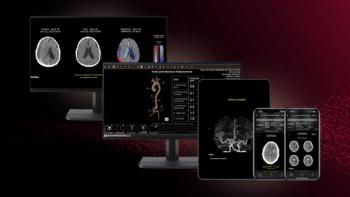
Multiphase CT with Deep Learning Accurately Differentiates Small Renal Masses
Deep learning with a convolutional neural network can support better differentiation of small solid renal masses.
Small solid kidney masses can be adequately differentiated for diagnosis on dynamic CT images by using a deep learning method with a convolutional neural network (CNN), according to new research.
Currently, diagnosis with dynamic CT has depended largely on radiologist experience. This study shows automated image analysis of these masses with deep learning can discern between benign and malignant tumors without requiring a radiologist to have significant experience.
The findings were published in an ahead-of-print issue of
Researchers from Okayama University in Japan studied 168 pathologically diagnosed small solid masses (less than 4cm) from 159 patients between 2012 and 2016. They reviewed 1,807 images sets with four CT phases – unenhanced, corticomedullary, nephrogenic, and excretory. Investigators classified masses as malignant (n=136) or benign (n=32), and they divided the dataset into five subsets – four for augmentation and supervised training and one for testing.
Using the Inception-v3 architecture CNN model, a team, led by Takashi Tanaka, Okayama assistant professor, evaluated the AUC for malignancy and accuracy at optimal cutoff values with six different CNN models. They found no significant size difference between malignant and benign lesions.
In addition, they determined the corticomedullary phase AUC value was higher than other phases. Images in this phase also offered the highest accuracy – 88 percent – and multivariate analysis indicated this phase’s CNN model is also a significant malignancy predictor when compared to other CNN models, age, sex, and lesion size.
“The results of this study are not presumed to indicate that the diagnostic performance of CNN models is superior to that of radiologists; rather, the study was designed to show imaging similarity between malignant and benign masses,” according Tanaka. “However, by preparing and adjusting the appropriate images for training, we might be able to create more promising models to support our daily work.”
Newsletter
Stay at the forefront of radiology with the Diagnostic Imaging newsletter, delivering the latest news, clinical insights, and imaging advancements for today’s radiologists.




























